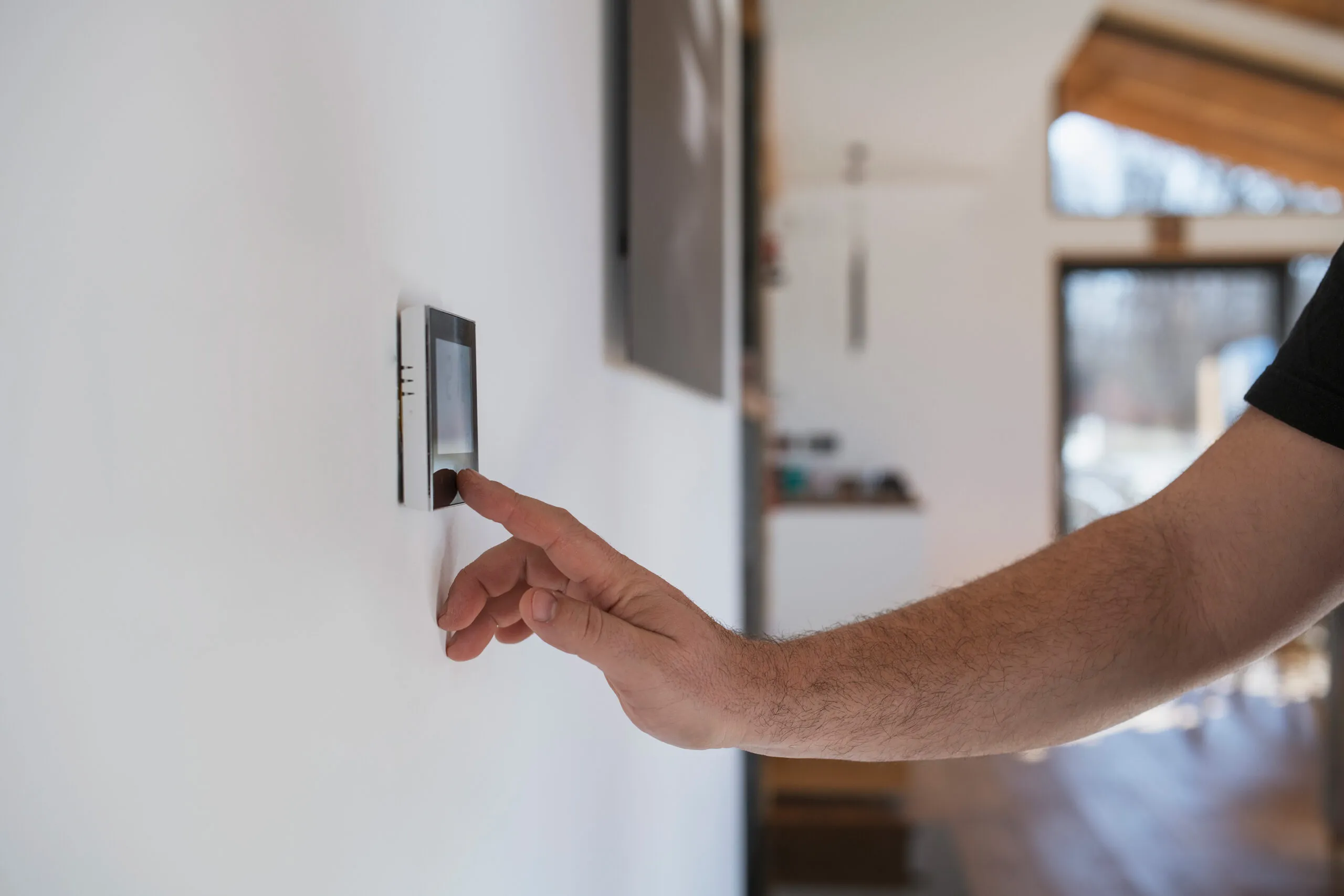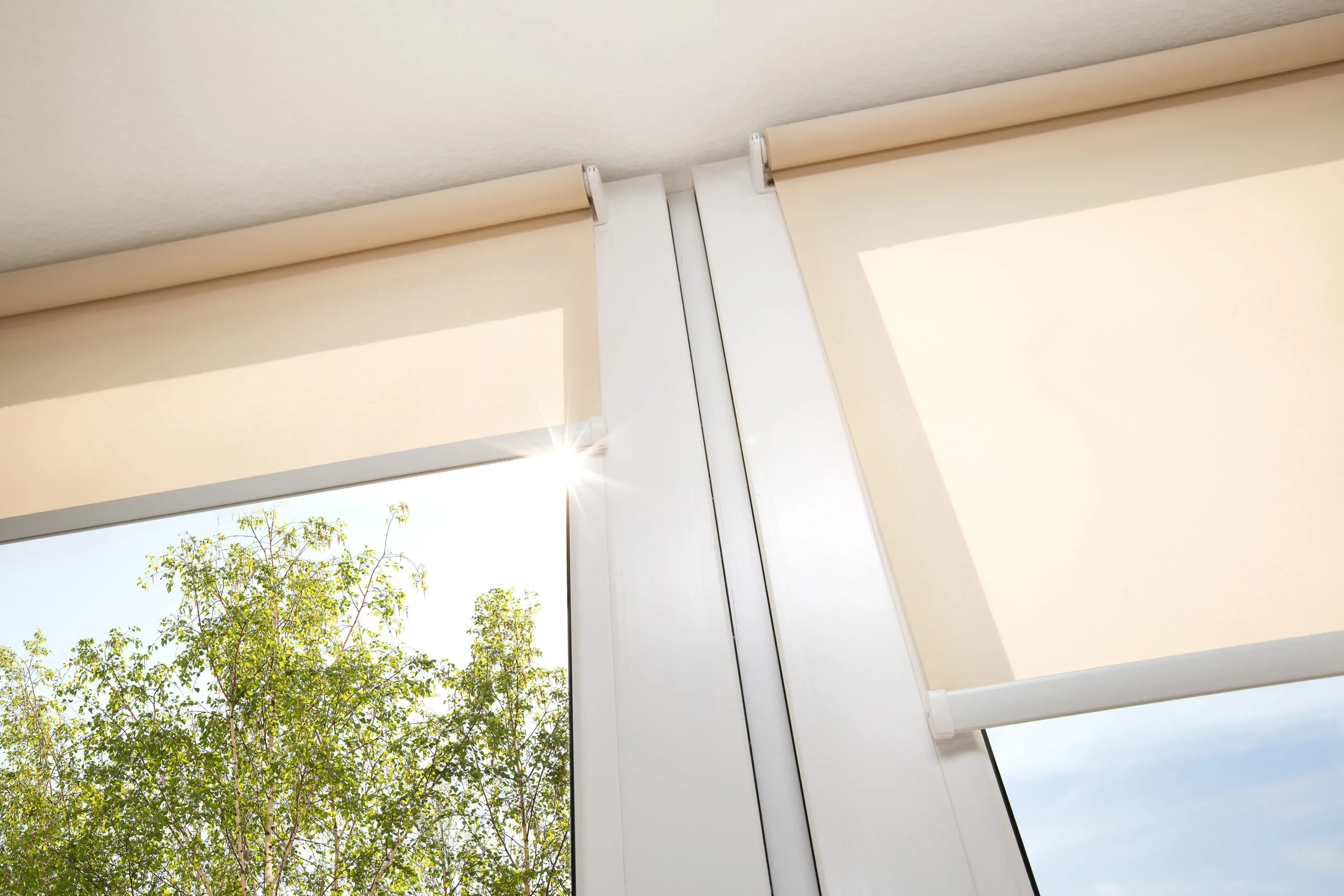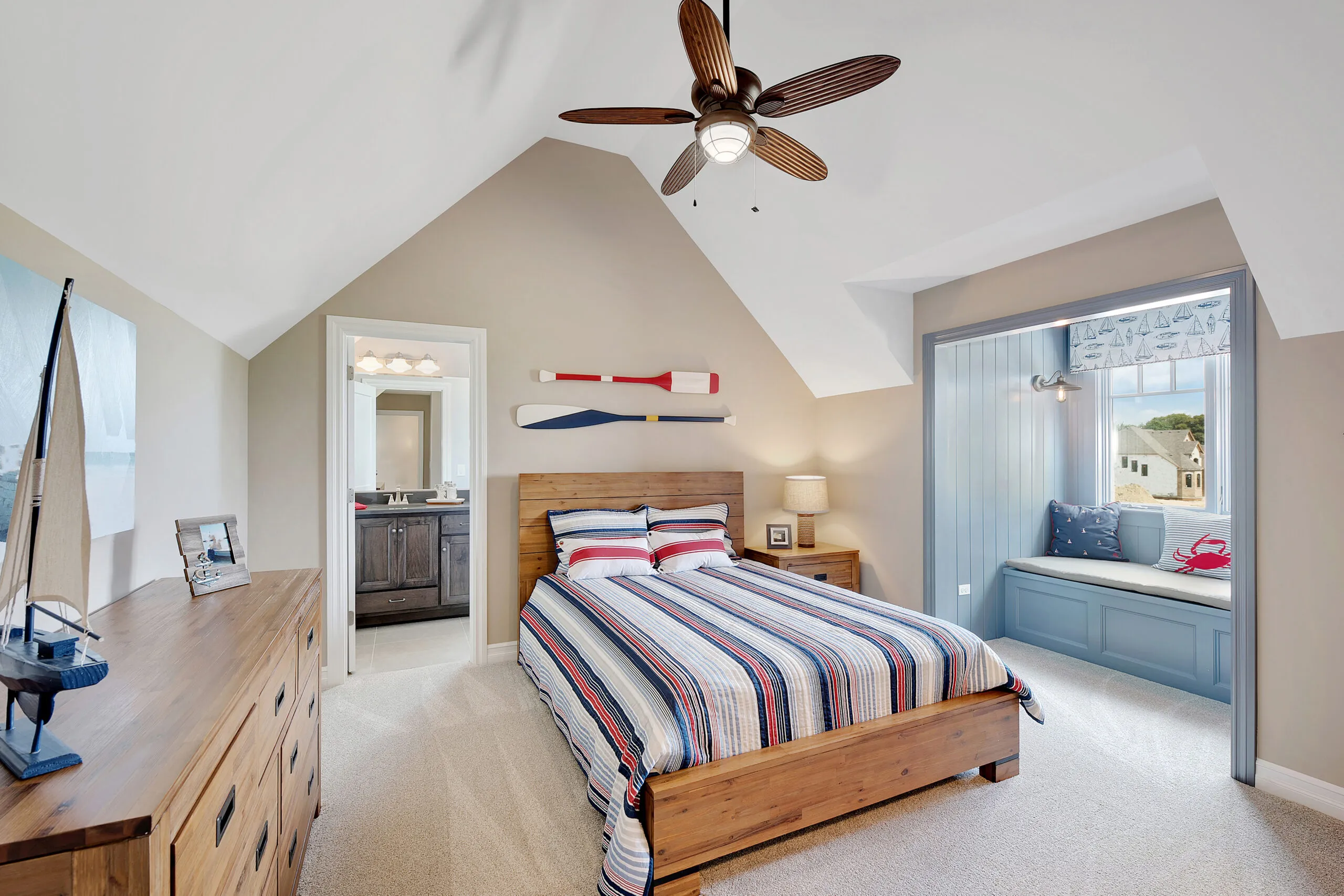Keeping your home cool becomes increasingly important as temperatures rise in the summer months. Air conditioning isn’t the only solution, though, and keeping it constantly running isn’t feasible if you’re on a budget. Read about 10 easy ways you can cool your home in the guide below, from setting your thermostat more strategically to blocking out the sun with trees.
Understanding Home Heat Gain
It’s worth your while to learn about how heat enters and sits in your home before you dive into cooling solutions. This will help you to target problem areas more effectively and implement the best cooling strategies for your household.
Sources of Indoor Heat
Sunlight that streams through windows can raise indoor temperatures significantly, and appliances, electronics, and lighting fixtures generate heat when you use them. Even our bodies produce heat, which can accumulate in spaces that don’t feature proper ventilation. Identifying these heat sources can help you to develop an effective cooling plan.
The Impact of Outdoor Temperature
As outside temperatures rise, heat naturally flows into your home through walls, roofs, and windows. This is known as heat transfer, and it can quickly overwhelm your cooling system if you don’t properly manage it. Understanding this relationship can help you to implement useful strategies. Remember to work with nature rather than fight against it.
Optimize Your Air Conditioning System
Your air conditioning system is frequently the first line of defense against summer heat. Use it wisely to keep yourself comfortable while minimizing energy consumption.

Set Your Thermostat Strategically
One of the simplest and most effective ways to reduce cooling costs is to adjust your thermostat settings. If you have a central air system, set the temperature to something above 78 degrees Fahrenheit. Each degree above this mark can save you 5% to 8% on cooling costs. Consider the programmable thermostat settings below for optimal efficiency:
- 6 a.m. to 9 a.m.: 75 degrees Fahrenheit
- 9 a.m. to 5:30 p.m.: 80 degrees Fahrenheit
- 5:30 p.m. to 11 p.m: 75 degrees Fahrenheit
- 11 p.m. to 6 a.m.: 80 degrees Fahrenheit
If you leave your home for more than an hour, set the thermostat to 85 or 90 degrees Fahrenheit. When you return, reset it to your desired temperature. The system will cool the room in about 15 minutes, and it will use less energy than it would have if you’d left it running at a lower setting while you were out.
Maintain Your AC Unit
Maintaining your air conditioning system regularly will keep it operating efficiently. Replace or clean air filters monthly when you’re using your system a lot. Hire a professional to clean coils, check refrigerant levels, and check for proper functioning each year. If you maintain your system well, you can reduce your cooling costs and extend the life of your system.
Harness the Power of Fans
Fans improve air circulation and are an excellent complement to air conditioning.
Ceiling Fans: Installation and Usage
Installing ceiling fans in rooms that you frequently use can make a significant difference in perceived temperature. Set ceiling fans to rotate counterclockwise in summer, which will create a wind-chill effect that can make a room feel 4 to 6 degrees Fahrenheit cooler. Remember to turn off fans when you leave a room, as they cool people, not spaces. Consider installing a motion-detector switch, too, which automatically turns fans on when you enter a room and off when you leave the room.
Whole-House Fans for Nighttime Cooling
A whole-house fan can be an excellent investment for areas in which nighttime temperatures drop into the 70s. You can install these fans in an upstairs ceiling, and they pull cool air in through open windows and expel hot air through the attic. They can significantly reduce your reliance on air conditioning. Whole-house fans use only as much energy to power as a couple of light bulbs.
Implement “Texas Cool” Technique
The “Texas Cool” method is a simple and effective way to use cool outdoor temperatures to naturally cool your home.

Morning Routine
As soon as you wake up, open your windows and use window fans or a whole-house fan to usher in the cool morning air. This also helps to flush out warm air that may have accumulated overnight.
Evening Routine
As the day heats up, close all windows and draw shades or curtains to keep the heat out. In the evening, when outdoor temperatures start to drop below indoor temperatures, open windows again to let in cool air. This method can significantly reduce your reliance on air conditioning, and can cut your cooling bill by 20% to 50%.
Block Out the Sun
Preventing sunlight from entering your home is an important part of maintaining a cool indoor environment. Up to 20% of summer heat enters through windows, so you must implement sun-blocking strategies.
Window Treatments for Heat Reduction
Invest in curtains, blinds, or shades to use in rooms that get direct sunlight. Keep these closed during the hottest parts of the day, especially on west-facing windows in the late afternoon. Options range from inexpensive roller shades to more efficient insulated curtains. These treatments can prevent your home from gaining more than one degree Fahrenheit per hour when outdoor temperatures exceed 85 degrees Fahrenheit.
Exterior Solutions: Awnings and Shade Trees
Consider installing awnings over windows that receive direct sunlight for a more permanent solution. These can reduce solar heat gain by up to 65% on south-facing windows and 77% on west-facing windows. Planting shade trees is another long-term strategy. It takes time for trees to grow, but they can eventually provide significant cooling benefits by shading your home and reducing the ambient temperature that builds up around it.
Insulate and Ventilate Your Attic
Your attic plays an important role in your home’s overall temperature regulation. Proper insulation and ventilation can significantly reduce your cooling costs.
Proper Attic Insulation
Check your attic’s insulation levels. If you have less than 7 inches of fiberglass or rock wool insulation, or six inches of cellulose insulation, consider adding more. The United States Department of Energy recommends between R-22 and R-49 insulation in attics, depending on your region. Before you add insulation, seal around recessed lights, vents, and plumbing to prevent air leaks.
Effective Attic Ventilation Systems
Proper ventilation is an important part of managing attic temperatures. Gable vents can lower attic temperatures by about 10 degrees Fahrenheit, while a ridge-and-soffit ventilation system can reduce attic temperature to around 100 degrees Fahrenheit. These improvements lower your cooling costs and extend the life of your roof shingles.
Upgrade Your Lighting and Appliances
The appliances and lighting you use in your home can make your indoor spaces hotter. Address this heat buildup with some of the strategies below.
Energy-Efficient Light Bulbs
Replace incandescent bulbs with LED or compact fluorescent alternatives. These energy-efficient options use about 75% less energy and emit 90% less heat than traditional bulbs. This switch will reduce your cooling load and cut your lighting costs year-round.
Smart Appliance Usage
Appliances, especially kitchen appliances, can generate a ton of heat. Use your oven, stove, and dishwasher during cool hours. Consider cooking outdoors on a grill to keep heat out of your home. Use the microwave or slow cooker instead of the oven when you can, as these appliances generate less heat.
Seal Air Leaks and Insulate Ducts
Address air leaks and improve duct insulation to make your home more energy efficient.
Identifying and Fixing Air Leaks
Look for gaps around windows, doors, and any space where utilities enter your home. Seal these leaks with weatherstripping or caulk. Pay special attention to the attic and basement, as these areas are prone to significant air leakage. Properly sealing air leaks can reduce your cooling costs by up to 10%.
Duct Sealing and Insulation
Leaky ducts can make your air conditioner much less efficient. Seal connections at vents and registers where they meet the floors, walls, and ceiling. If you have ducts in unconditioned spaces such as attics, add a layer of insulation to prevent heat gain. You can perform minor repairs as do-it-yourself projects, but consider hiring a professional to handle more comprehensive duct inspection and sealing services.
Utilize Natural Cooling Methods
You can reduce your reliance on artificial cooling by harnessing natural cooling power. Read more about related strategies below.
Strategic Landscaping
Plant trees or tall shrubs on the east and west sides of your home to generate shade and make spaces cooler. Deciduous trees provide shade in summer and allow sunlight through in winter when their leaves fall to the ground. Create a green space around your home to lower the ambient temperature through evapotranspiration.
Cool Roof Options
If you need to replace your roof, consider investing in cool roofing materials. These products reflect more sunlight and absorb less heat than standard roofing materials. Options include specially coated metal roofs, light-colored shingles, or green roofs that are covered with vegetation. Cool roofs can reduce roof temperatures by up to 50 degrees Fahrenheit and cut cooling costs significantly.
Cook Smart To Reduce Indoor Heat
Cooking can significantly increase indoor temperatures, especially during hot summer days. Adjust your cooking habits to keep your home cooler by implementing some of the strategies below.
Outdoor Cooking Alternatives
Take advantage of warm weather by cooking outdoors. Use a grill or outdoor kitchen to keep heat outside. This will keep your indoor space cool and reduce the strain on your air conditioning system. It’s also a great way to enjoy the summer weather while preparing meals.
Energy-Efficient Indoor Cooking Tips
If you have to cook indoors, use appliances that generate less heat. Use the microwave, slow cooker, or pressure cooker instead of the oven. These appliances produce less heat and are more energy efficient. If you must use the oven, try to use it in the evening when temperatures are cooler. Use exhaust fans while cooking to remove heat and humidity from your kitchen.

